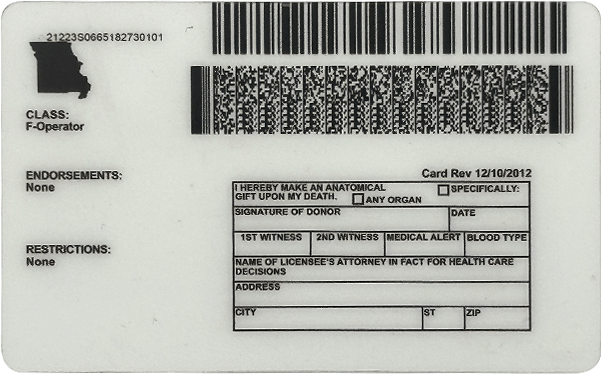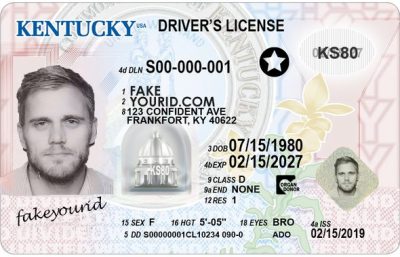Driving is an essential part of modern – day life, and driver’s licenses are crucial documents that prove a person’s legal right to operate a motor vehicle. However, the existence of fake driver’s licenses is a significant concern for government agencies. These counterfeit licenses can be used for illegal activities, such as identity theft, driving under false pretenses, and evading law – enforcement. To combat this problem, government agencies employ a variety of methods to verify the authenticity of driver’s licenses.
Visual Inspection
The first step in verifying a driver’s license is often a visual inspection. Government agents are trained to look for specific features on the license that are difficult to replicate. For example, most modern driver’s licenses have holographic images or overlays. These holograms are created using advanced technology and are very hard to fake. They usually display the state seal, the license holder’s photo, or other identifying information in a three – dimensional, iridescent form. When tilted, the hologram should change appearance, showing different colors and patterns.

Another visual element is the use of microprinting. Microprinting involves printing extremely small text on the license. This text is often too small to be read with the naked eye but can be easily seen under a magnifying glass. For instance, the state’s name or other security – related text may be microprinted on the license. Fakers find it challenging to reproduce microprinting accurately, making it a reliable security feature.
Watermarks are also common on driver’s licenses. A watermark is a faint image or text that is embedded in the license material during the manufacturing process. When held up to the light, the watermark becomes visible. It may be the state logo, the license holder’s photo, or some other identifying mark. Watermarks are difficult to create in counterfeit licenses, as they require specialized manufacturing techniques.
Magnetic Strip and Barcode Verification
Many driver’s licenses today come with a magnetic strip or a barcode. The magnetic strip contains encoded information about the license holder, such as their name, address, date of birth, and driving record. When a law – enforcement officer or a government agency needs to verify the license, they can use a magnetic – stripe reader to scan the strip. The reader then decodes the information and compares it to the information displayed on the license. If there are any discrepancies, it could be a sign of a fake license.

Barcodes, on the other hand, are a more modern form of data storage on driver’s licenses. They can store a larger amount of information and are often more resistant to damage. A barcode scanner can quickly read the information encoded in the barcode and transmit it to a database for verification. The database will then check if the information matches the records on file for the supposed license holder. If the barcode cannot be scanned or if the information does not match, further investigation is warranted.
Database Checks
Government agencies maintain extensive databases of driver’s license information. When a license is presented for verification, the agency can check the license number, the name of the license holder, and other identifying details against these databases. The databases contain information about when the license was issued, any restrictions or endorsements on the license, and the license holder’s driving history. If the license number is not found in the database or if the information does not match, it is likely that the license is fake.

These databases are also connected to other law – enforcement databases. For example, they may be linked to criminal records databases. If a person presents a driver’s license and the database check reveals that the license holder has a criminal record or is wanted for some offense, it can trigger a more in – depth investigation. Additionally, the databases are constantly updated to reflect any changes in the license holder’s status, such as license renewal, revocation, or suspension.
Biometric Verification
In some advanced systems, biometric verification is used to ensure the authenticity of a driver’s license. Fingerprint recognition is one of the most common biometric methods. When a license is issued, the license holder’s fingerprints are captured and stored in a secure database. When the license is presented for verification, the fingerprint of the person presenting the license is scanned and compared to the stored fingerprint. If the fingerprints match, it provides strong evidence that the license is being used by the legitimate holder.
Another biometric method is facial recognition. The photo on the driver’s license is compared to the face of the person presenting the license using advanced facial – recognition algorithms. These algorithms analyze features such as the distance between the eyes, the shape of the nose, and the contour of the face. If the facial features match, it is likely that the license is genuine. However, facial – recognition technology is not without its limitations, as factors such as changes in appearance due to aging, weight loss or gain, or the use of glasses or other accessories can affect the accuracy of the match.
Common Problems and Solutions
- Problem: Hologram Duplication
Some fakers may attempt to duplicate holograms using lower – quality materials or techniques. Solution: Government agencies can continuously update the hologram technology, making it more complex and difficult to replicate. For example, they can add more layers to the hologram or use new types of iridescent materials. Regular training for law – enforcement and verification officers on the latest hologram features also helps in detecting fake holograms. - Problem: Magnetic Strip or Barcode Damage
The magnetic strip or barcode on a driver’s license may get damaged due to wear and tear, exposure to magnetic fields, or other factors. This can lead to difficulties in verification. Solution: Provide clear instructions to license holders on how to take care of their licenses to prevent damage to the magnetic strip or barcode. In cases where the strip or barcode is damaged, have a backup verification method, such as a manual database check using the license number and other visible information on the license. - Problem: Database Inconsistencies
There may be cases where there are inconsistencies in the databases, such as incorrect or outdated information. This can lead to false alarms during license verification. Solution: Implement regular database audits to ensure the accuracy and integrity of the data. Have a system in place for license holders to update their information easily, such as through an online portal. When an inconsistency is detected during verification, have a process for further investigation to determine if it is a data – entry error or a sign of a fake license. - Problem: Biometric Mismatches
As mentioned earlier, biometric verification methods like facial recognition can sometimes result in mismatches due to various factors. Solution: Use a combination of biometric methods for more accurate verification. For example, in addition to facial recognition, also use fingerprint recognition. Provide options for license holders to update their biometric data if there are significant changes in their appearance, such as after a major surgery or a long – term illness. - Problem: Forgery of Microprinting and Watermarks
Some sophisticated forgers may attempt to replicate microprinting and watermarks. Solution: Use more advanced microprinting techniques, such as variable – data microprinting, where the microprinting changes for each license. For watermarks, develop new and more complex manufacturing processes that are difficult to reproduce. Regularly update the design of microprinting and watermarks to stay ahead of forgers.
Fake ID Pricing
unit price: $109
| Order Quantity | Price Per Card |
|---|---|
| 2-3 | $89 |
| 4-9 | $69 |
| 10+ | $66 |

